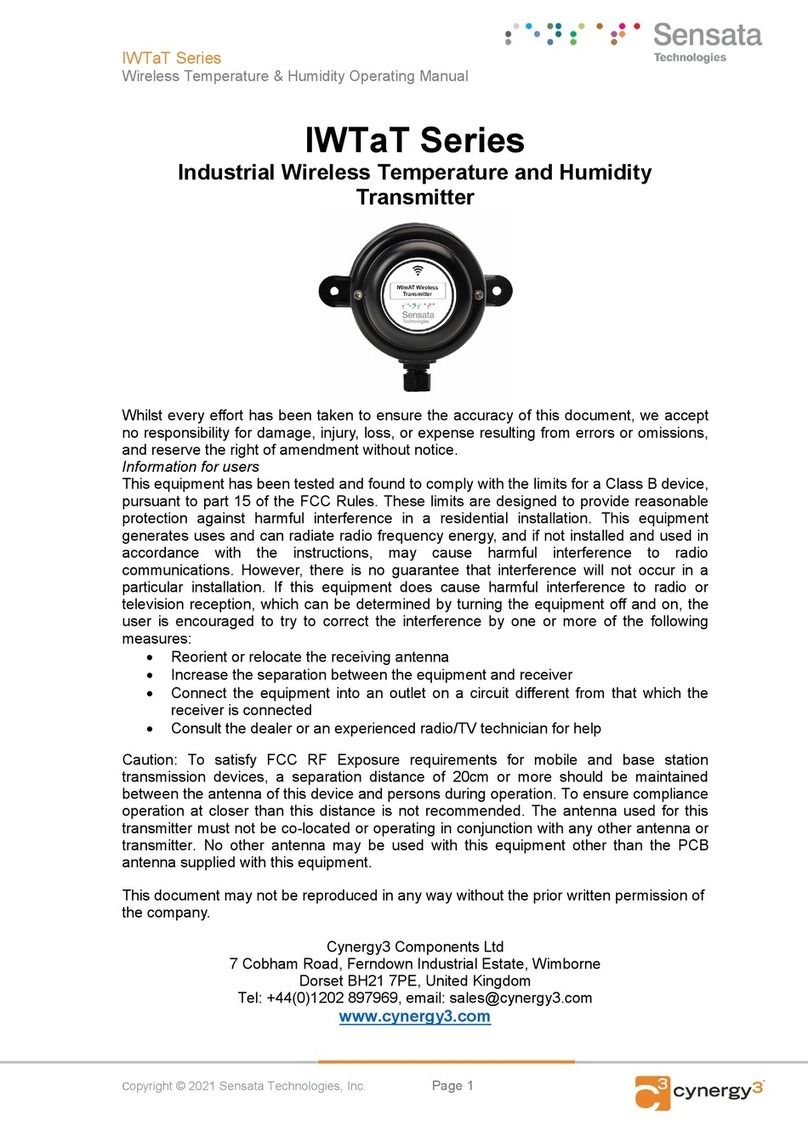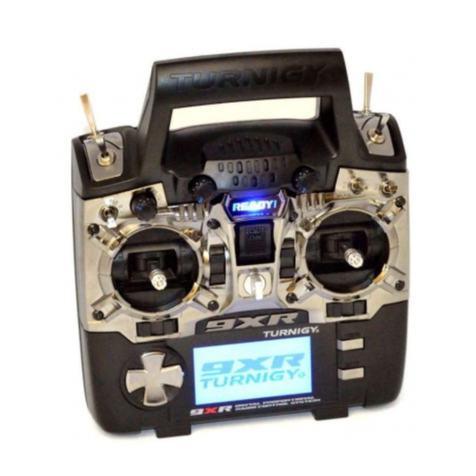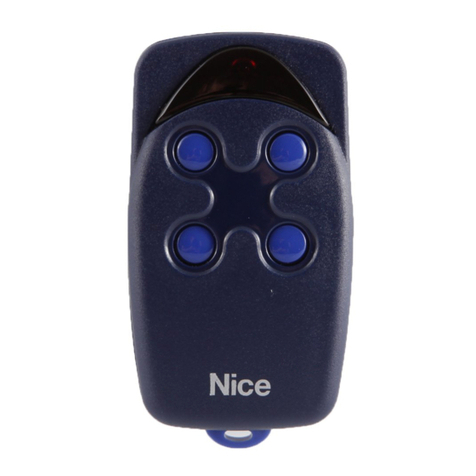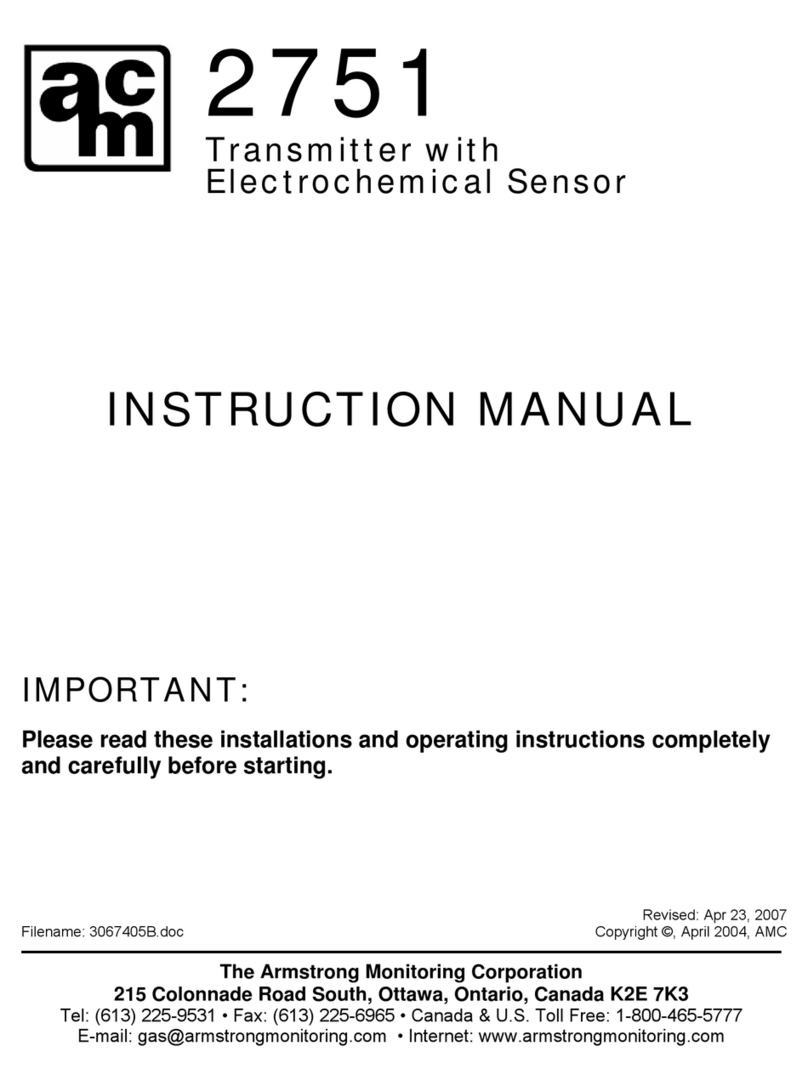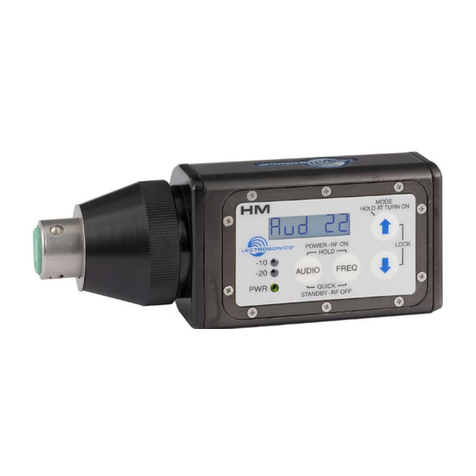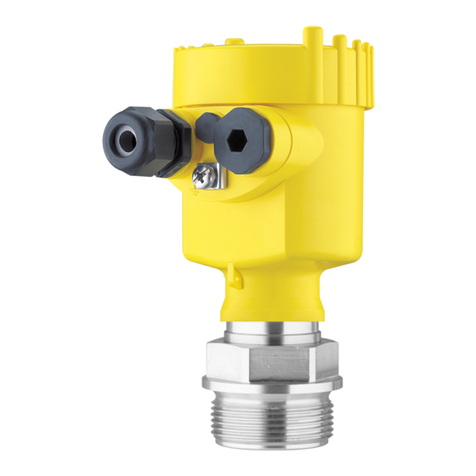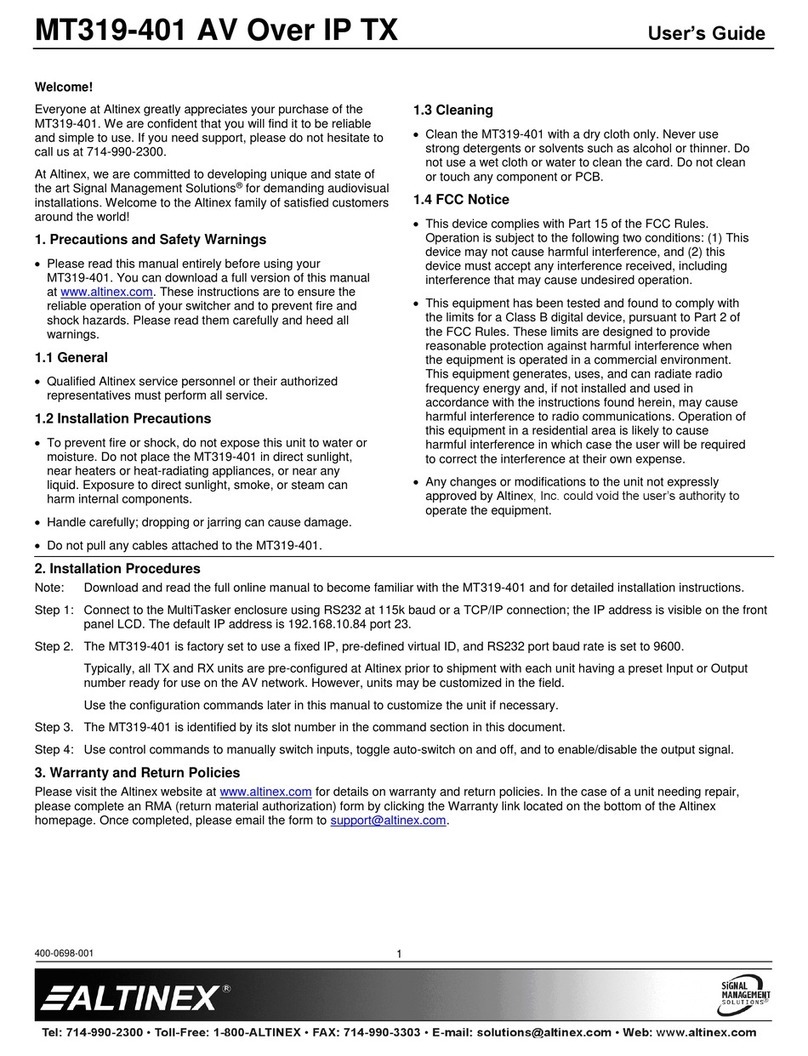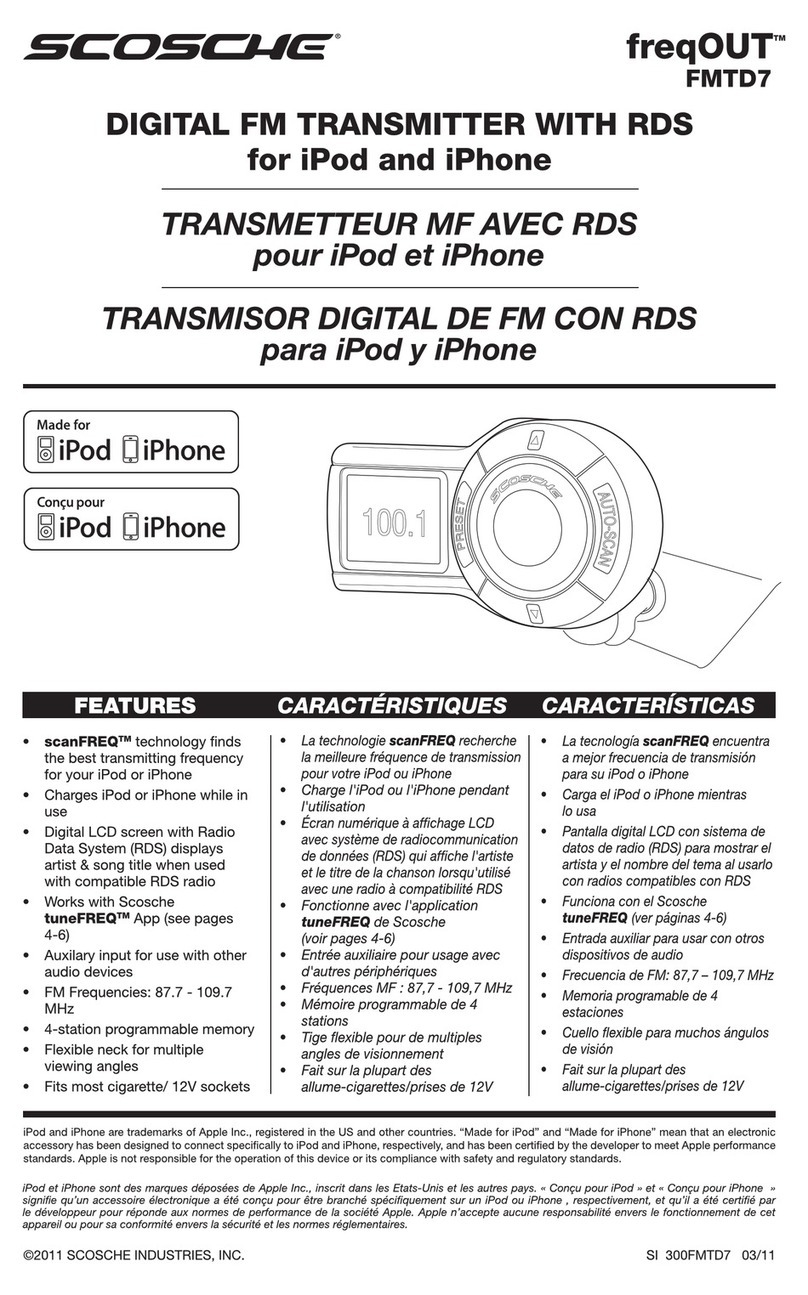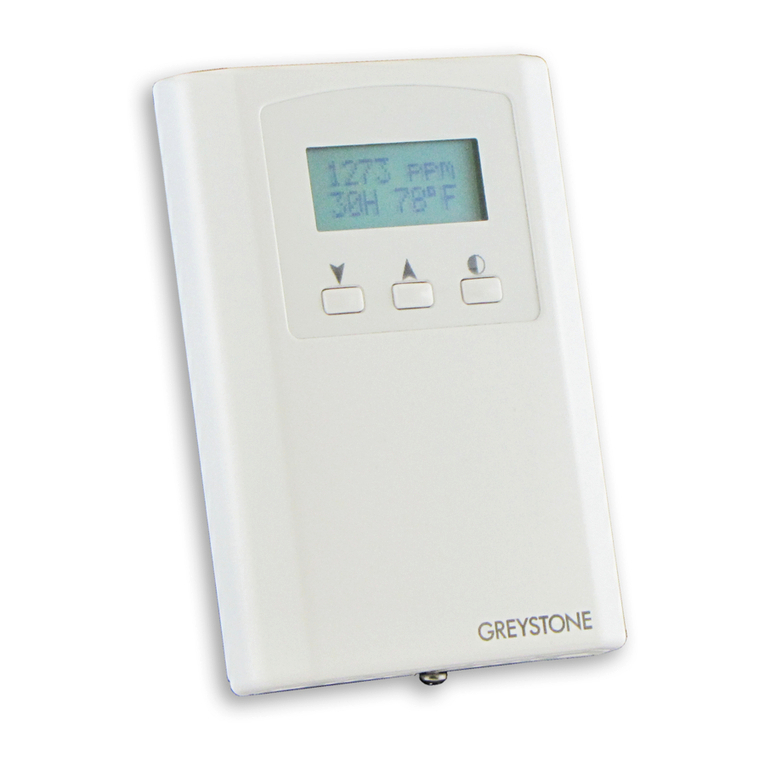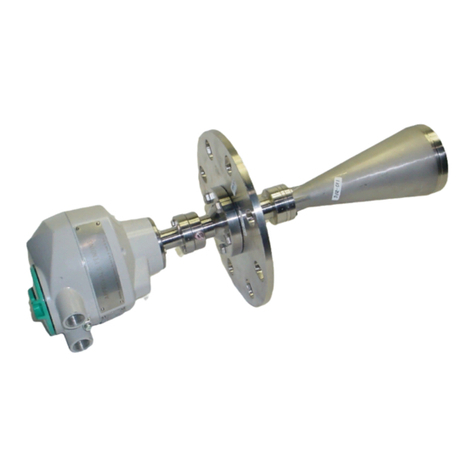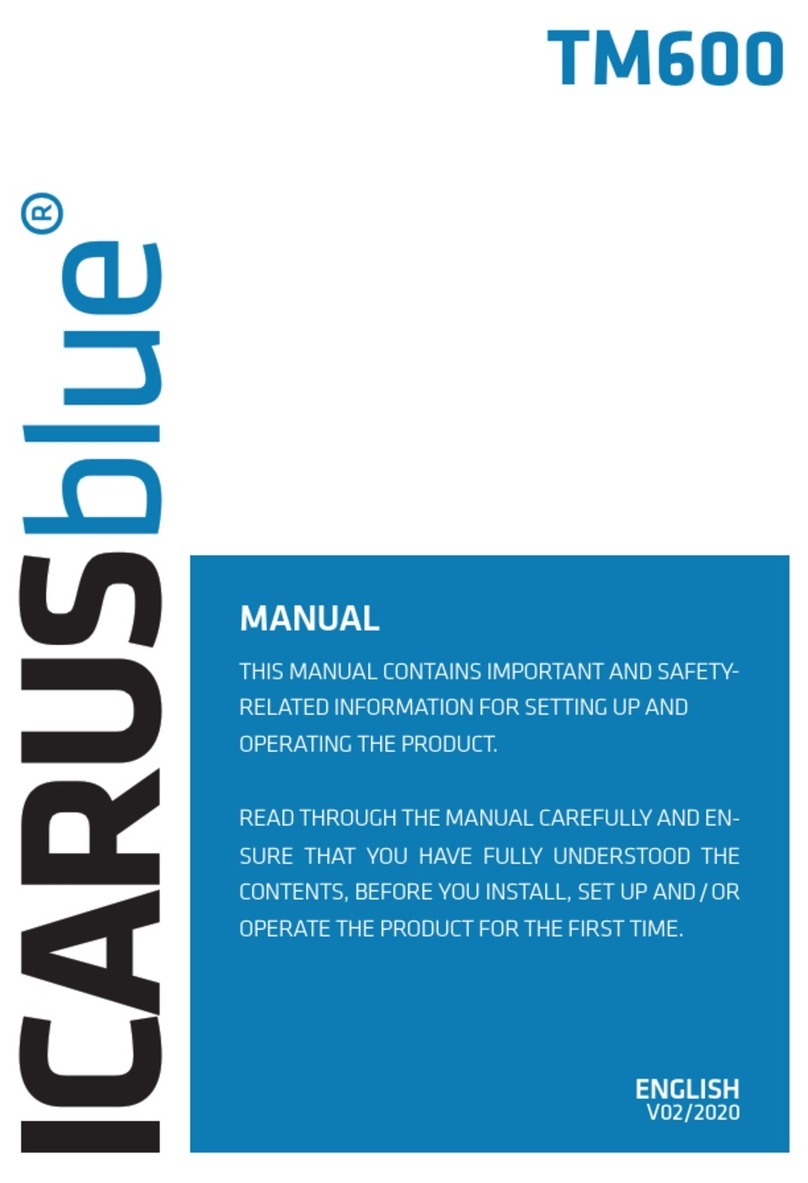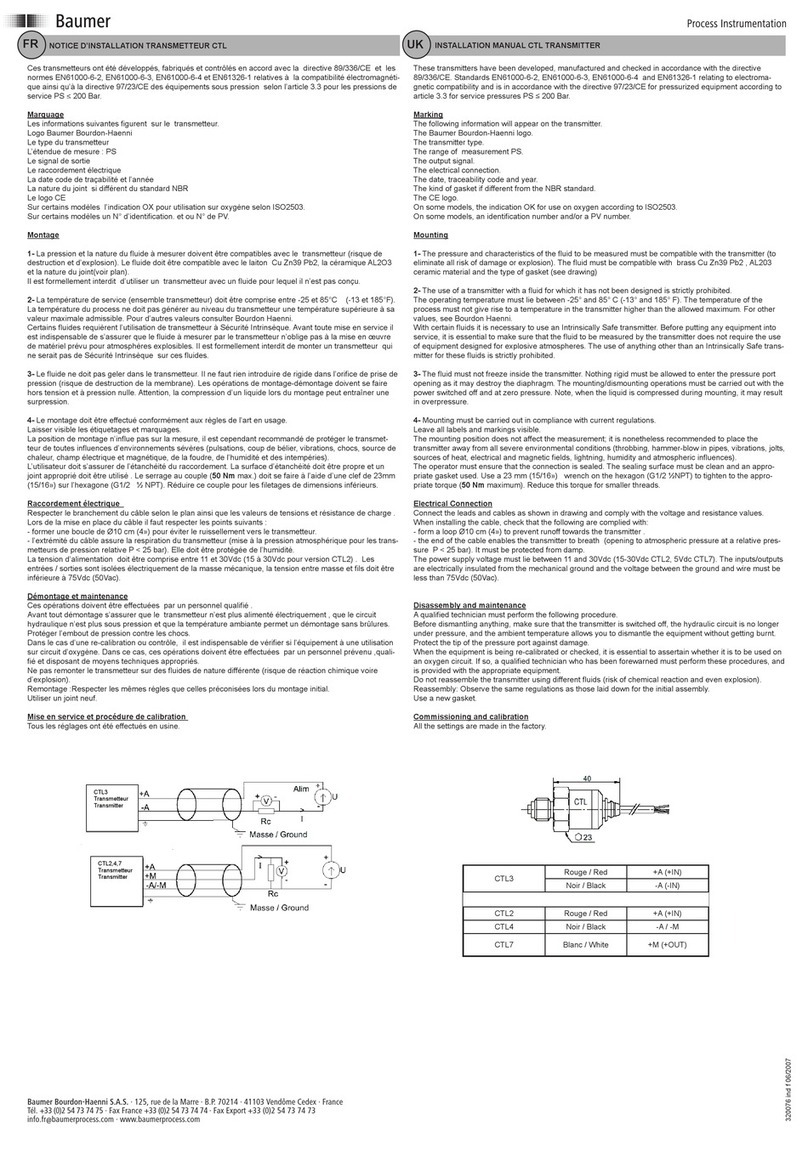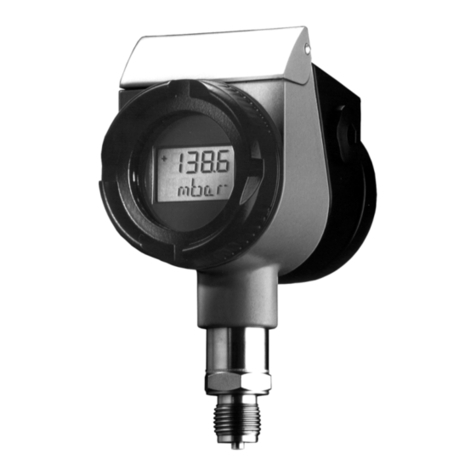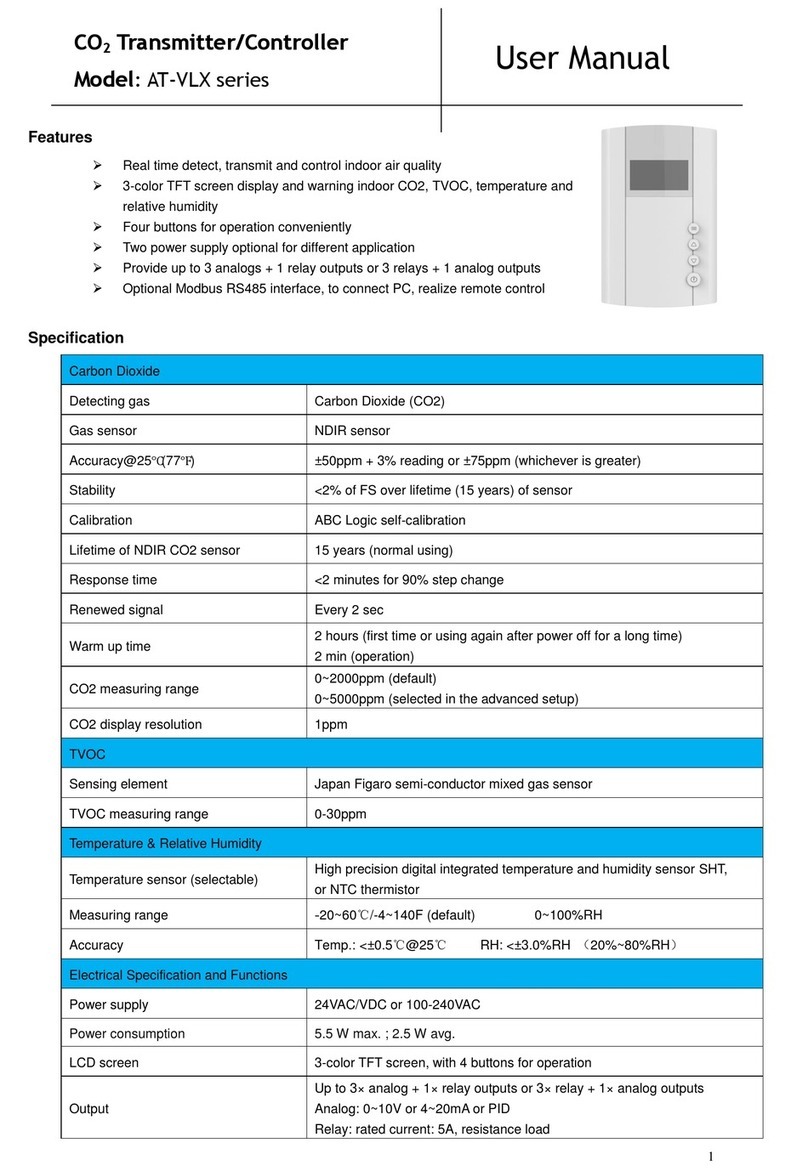Sensata IWT-128 Series User manual

| IWT-128 SERIES
TRANSMITTER AND BUS CO-ORDINATOR OPERATING MANUAL
Copyright © 2021 Sensata Technologies, Inc. Page 1
|IWT-128 Series
24V AC or DC POWERED
IWT TRANSMITTER AND BUS CO-ORDINATOR
with 128 channels
Whilst every effort has been taken to ensure the accuracy of this document, we accept no
responsibility for damage, injury, loss, or expense resulting from errors or omissions, and reserve
the right of amendment without notice.
Information for users
This equipment has been tested and found to comply with the limits for a Class B device,
pursuant to part 15 of the FCC Rules. These limits are designed to provide reasonable
protection against harmful interference in a residential installation. This equipment
generates uses and can radiate radio frequency energy, and if not installed and used in
accordance with the instructions, may cause harmful interference to radio
communications. However, there is no guarantee that interference will not occur in a
particular installation. If this equipment does cause harmful interference to radio or
television reception, which can be determined by turning the equipment off and on, the
user is encouraged to try to correct the interference by one or more of the following
measures:
Reorient or relocate the receiving antenna
Increase the separation between the equipment and receiver
Connect the equipment into an outlet on a circuit different from that which the receiver is
connected
Consult the dealer or an experienced radio/TV technician for help
Caution: To satisfy FCC RF Exposure requirements for mobile and base station
transmission devices, a separation distance of 20cm or more should be maintained
between the antenna of this device and persons during operation. To ensure compliance
operation at closer than this distance is not recommended. The antenna used for this
transmitter must not be co-located or operating in conjunction with any other antenna or
transmitter. No other antenna may be used with this equipment other than the antenna
supplied with this equipment.
This document may not be reproduced in any way without the prior written permission of
the company.

| IWT-128 SERIES
TRANSMITTER AND BUS CO-ORDINATOR OPERATING MANUAL
Copyright © 2021 Sensata Technologies, Inc. Page 2
CONTENTS
IWT-128 ____________________________________________________________ 1
1. INTRODUCTION ___________________________________________________ 3
1.1 Safety Information ___________________________________________________ 3
1.2 Hardware Features __________________________________________________ 3
1.3 Isolation Details _____________________________________________________ 3
2. UNPACKING______________________________________________________ 4
3. QUICK START GUIDE ______________________________________________ 4
3.1 Example 1__________________________________________________________ 4
4. CONNECTIONS ___________________________________________________ 5
5. CONFIGURING THE IWT-128 ________________________________________ 6
5.1 Output Stage _______________________________________________________ 6
5.2 Radio Network Selection______________________________________________ 6
6. CALIBRATING THE IWT-128_________________________________________ 7
6.1 Main menu _________________________________________________________ 7
6.2 Select IWT-128 Channel (1. CHANNEL) __________________________________ 7
6.3 Output Span and Output Zero (2. OUT SPAN and 3. OUT ZERO) _____________ 8
6.4 Display Scaling Values Adjust (4. DSV Cc Pp, 5. DS span, 6. DZ zero)_________ 8
6.5 View Display Scaling Values (7.VIEW DSV)_______________________________ 9
6.6 Display Timer (8.DISPLAY display) _____________________________________ 9
6.7 Age Select (9.AGE age) _______________________________________________ 9
6.8 Transmit Time Period (10.TRANSMIT time) _______________________________ 9
7. ISOSLICE BUS ___________________________________________________ 10
8. INSTALLATION __________________________________________________ 10
9. TROUBLESHOOTING _____________________________________________ 11
9.1 Incorrect Reading __________________________________________________ 11
9.2 Sensor Failure _____________________________________________________ 11
10. SPECIFICATIONS (@ 25°C)________________________________________ 14

| IWT-128 SERIES
TRANSMITTER AND BUS CO-ORDINATOR OPERATING MANUAL
Copyright © 2021 Sensata Technologies, Inc. Page 3
1. INTRODUCTION
1.1 Safety Information
This manual contains information that must be observed in the interest of your safety and
to avoid damage to assets. Please read this manual before installing and commissioning
the device and keep the manual in an accessible location for all users.
Contains FCC ID: W70MRF24J40MDME
Caution: To satisfy FCC RF Exposure requirements for mobile and base station
transmission devices, a separation distance of 20 cm or more should be maintained
between the antenna of this device and persons during operation. To ensure compliance
operation at closer than this distance is not recommended. The antenna used for this
transmitter must not be co-located or operating in conjunction with any other antenna or
transmitter. No other antenna may be used with this equipment other than the PCB
antenna supplied with this equipment.
Please see the Certifications section for more information on RF Exposure Compliance
1.2 Hardware Features
The IWT-128 Transmitter module allows almost any number of analog or digital input
values to be wirelessly transmitted to a remote receiver with either analog 4-20 mA, 0-10
V, Ethernet, RS-485, or RS-232 outputs.
It can produce 2 types of analog output: voltage and mA source. It provides local control
over analog and digital output Isoslice units.
A built-in display allows local monitoring of the individual inputs and outputs and displays
menu options when the unit is configured.
The unit can be powered by a DC voltage between 16 and 36 V dc or 16 and
32 V ac.
The instrument is packaged in a compact 22.5 mm wide enclosure which can be mounted
on a standard TS35 DIN-rail.
The system can be expanded through the use of optional Isoslice I/O modules. These
modules connect automatically via the DIN rail-mounted bus connector, allowing the easy
addition and removal of extra I/O.
1.3 Isolation Details
The IWT-128 has full 3 port isolation of 1000 V between the Output Stage and Power
Supply for functional reasons.

| IWT-128 SERIES
TRANSMITTER AND BUS CO-ORDINATOR OPERATING MANUAL
Copyright © 2021 Sensata Technologies, Inc. Page 4
2. UNPACKING
The instrument should be carefully inspected for signs of damage that may have occurred
in transit. In the unlikely case that damage has been sustained, DO NOT use the
instrument, but please retain all packaging for our inspection and contact your supplier
immediately.
3. QUICK START GUIDE
There are several different ways the IWT-128 can be used, here we show a QUICK
START example.
3.1 Example 1
A standard IWT-128 gathers data from 3 Isoslice-2 units and sends this
data every two seconds to the remote receiver,
The standard IWT-128 has no inputs or outputs, so it does not have or need its channel
number.
Refer to the Isoslice-2 installation instructions to allocate channel numbers using the
internal dip switches.
Fit the IWT-128 and the Isoslice-2 units onto the din rail.
Connect up the inputs to the Isoslice-2 units.
Connect up the power to the IWT-128 and switch it on (see section 4).
The IWT-128 will scan the bus, identify the Isoslice-2 units and commence reading them,
and sending data to the remote receiver every two seconds.

| IWT-128 SERIES
TRANSMITTER AND BUS CO-ORDINATOR OPERATING MANUAL
Copyright © 2021 Sensata Technologies, Inc. Page 5
4. CONNECTIONS
The IWT-128 is housed in a compact DIN rail mounting enclosure, with terminals,
arranged in 4 rows. The Communications ports are on the top and the power supply and
analog output are on the bottom rows.
The diagram below shows how to connect to an IWT-128 with an analog output.
OUTP
PS
16-36Vdc / 16-
0V
2
1
+ve
- ve
0-10V 0(4)-
1
1
Voltage
Current
1
2
1
1
Radio

| IWT-128 SERIES
TRANSMITTER AND BUS CO-ORDINATOR OPERATING MANUAL
Copyright © 2021 Sensata Technologies, Inc. Page 6
5. CONFIGURING THE IWT-128
5.1 Output Stage
If an analog output is fitted the output type is selected with Switch S4.
Output Type
S4 Position
mA Source
Off
Voltage
On
5.2 Radio Network Selection
Use the 4-way dip switch to select the Network to join. The dip switch must be changed
when the power to the IWT-128 is off.
1 2 3 4 Network Pan Id RF 1 2 3 4 Network Pan Id RF
0 0 0 0 1 6000 21 0 0 0 1 9 6008 14
0 0 1 0 2 6001 22 0 0 1 1 10 6009 15
0 1 0 0 3 6002 23 0 1 0 1 11 600A 16
0 1 1 0 4 6003 24 0 1 1 1 12 600B 17
1 0 0 0 5 6004 25 1 0 0 1 13 600C 18
1 0 1 0 6 6005 11 1 0 1 1 14 600D 19
1 1 0 0 7 6006 12 1 1 0 1 15 600E 20
1 1 1 0 8 6007 13 1 1 1 1 16 600F 21
If the radio stops receiving acknowledgments, it will reset after 10 attempts.
!
! WARNING !
DO NOT OPEN UNIT OR ADJUST SWITCHES WITH
POWER SUPPLY, INPUT OR OUTPUT CONNECTED
Switch S4
OFF
mA source
ON
Voltage

| IWT-128 SERIES
TRANSMITTER AND BUS CO-ORDINATOR OPERATING MANUAL
Copyright © 2021 Sensata Technologies, Inc. Page 7
6. CALIBRATING THE IWT-128
When the unit is shipped the IWT-128 will be calibrated for the output type and range
noted on the side label if it is fitted. If this label is blank then the unit will be calibrated for
4-20 mA output.
The display is used to show scaled values of the inputs and outputs in the system, or ON
and OFF for digital inputs and outputs. The left button scrolls through the available
channels, and the right button scrolls through the available parameters. Whilst the button
is held down, the channel number is shown on the left of the screen, and the parameter is
shown on the right. The led on the display will flash every 3 seconds to indicate to the
user that the unit is operating. The display can be configured to remain on all the time or
switch off after 15 minutes.
Data is sent to the remote receiver for each channel at the TRANSMIT time rate.
6.1 Main menu
To access the main menu push and hold both buttons until OK is displayed.
These are the main menu options, use raise and lower buttons to cycle through:
1. CHANNEL (sec 6.2) 6. DZ zero (sec 6.4)
2. OUT SPAN (sec 6.3) 7. VIEW DSV (sec 6.5)
3. OUT ZERO (sec 6.3) 8. DISPLAY time (sec 6.6)
4. DSV Cc Pp (sec 6.4) 9. AGE age (sec 6.7)
5. DS span (sec 6.4) 10. TRANSMIT time (sec 6.8)
Note that menu options 1,2,3 are only available when the output is fitted.
To access the sub-menu of one of the main menu options, use raise or lower to cycle to
the option required then push and release both buttons. Change the parameter as
required.
To return to the main menu, push and release both buttons.
To exit from the main menu and return to run mode, press and hold both buttons for 2
seconds until OK is displayed on the screen.
After two minutes of inactivity from the front buttons when the main menu (or a sub-
menu) had been accessed, a timeout will occur and the unit will automatically return to
run mode.
6.2 Select IWT-128 Channel (1. CHANNEL)
If the IWT-128 has an output it must be allocated a channel number on the system, so
that its data values can be identified correctly by the remote receiver.
The channel number chosen must not be a duplicate of any other device within the
system.

| IWT-128 SERIES
TRANSMITTER AND BUS CO-ORDINATOR OPERATING MANUAL
Copyright © 2021 Sensata Technologies, Inc. Page 8
Channel numbers can be selected between 1 and 128. By default, the channel number is
12. (The IWR-Port will automatically add channels as it receives data from remote units.
If the IWT-128 channel is changed when the remote receiver is operating, power cycle
the remote receiver to remove data from the now unused channel).
6.3 Output Span and Output Zero (2. OUT SPAN and 3. OUT ZERO)
The output span and output zero values are learned if there is an output fitted to the IWT-
128.
Display
Action
2.OUT SPAN
Press and release both buttons together
OS
Press raise/lower buttons to adjust output value until correct
OS
The tick will appear when a valid value has been learned
Press and release both buttons together to go to the main menu
2.OUT SPAN
Push the raise button once to change the menu item
3.OUT ZERO
Press and release both buttons together
OZ
Press raise/lower buttons to adjust output value until correct
OZ
The tick will appear when a valid value has been learned
Press and release both buttons together to go to the main menu
3.OUT ZERO
6.4 Display Scaling Values Adjust (4. DSV Cc Pp, 5. DS span, 6. DZ
zero)
The display can show a scaled numerical value for each parameter of each channel. Scaling values can
be adjusted between –999 and 9999. The default scaling values are 0 to 100. For all channels, all 8
parameters can be changed even if the channel is not used, or the parameter is an output.
Example: To change the scaling of channel 3 parameter 2, from 0 - 100 to 4 - 20:
Display
Action
4.DSV C1 P1
C1 P1 is channel 1 parameter 1
Press and release both buttons together
01 1
Press the lower button to choose the channel (on left: 1 to 32)
03 1
Press the raise button to choose a parameter (on right: 1 to 8)
03 2
Press and release both buttons together
4.DSV C3 P2
C3 P2 is channel 3, parameter 2
Push the raise button once to change the menu item
5.DS 100
Display Span value is 100
Press and release both buttons together
100
Press raise/lower buttons to adjust display span value
20
Press and release both buttons together
5.DS 20
Display Span value is now 20
Push the raise button once to change the menu item
6.DZ 0
Display Zero value is 0
Press and release both buttons together
0
Press raise/lower buttons to adjust display zero value
4
Press and release both buttons together
6.DZ 4
Display Zero value is now 4

| IWT-128 SERIES
TRANSMITTER AND BUS CO-ORDINATOR OPERATING MANUAL
Copyright © 2021 Sensata Technologies, Inc. Page 9
4.DSV Cc Pp is used to select the channel and parameter that need display values
changing, where c represents the channel and p indicates the parameter.
To select a different channel or parameter enter the submenu. The display will show the
channel on the left and the parameter on the right. The lower button increases the
channel (1 to 32) and the raise button increases the parameter (1 to 8).
For the channel and parameter chosen in menu 3:
5.DS span indicates what the display span value is (span is –999 to 9999)
To change the display span value enter the sub-menu and adjust it.
6.DZ zero indicates what the display zero value is (zero is –999 to 9999)
To change the display zero value enter the sub-menu and adjust it.
6.5 View Display Scaling Values (7.VIEW DSV)
To view all eight parameter scaling values of a particular channel, enter this sub-menu.
The first channel shown will be the one selected in 4.DSV Cc Pp. The scaling values will
be shown in a scrolling message in this format:
e.g. for channel 3:
C3.P1 100,0 P2 20,4 P3 100,0 P4 100,0 P5 100,0 P6 100,0 P7 100,0 P8 100,0
The channel being viewed can be changed using the lower or raise buttons, each press
will cause the scrolling message to begin again, this time for a different channel.
6.6 Display Timer (8.DISPLAY display)
Choose if the display remains on all the time or switches off 15 minutes after a button
was last pressed.
ON Select this to make the display stay on all the time
15 Select this to make the display switch off after 15 minutes
6.7 Age Select (9.AGE age)
The age of a parameter can be counted in seconds or minutes, which will depend on the
update of the wireless sensors concerned. Use this menu to select between
SEC select this to count in seconds
MIN select this to count in minutes
6.8 Transmit Time Period (10.TRANSMIT time)
The update rate for the IWT-128 to transmit data to the IWR-Port can be varied in 0.5-
second increments from every 2 seconds to every 127.5 seconds.
The default is every 2 seconds.

| IWT-128 SERIES
TRANSMITTER AND BUS CO-ORDINATOR OPERATING MANUAL
Copyright © 2021 Sensata Technologies, Inc. Page 10
7. ISOSLICE BUS
If the IWT-128 has an output fitted, it will need to have its own channel number in the
range 1 to 128 (see section 6.2). This channel number must not exist elsewhere in the
system.
Isoslice units connected to the IWT-128 must-have channel numbers that exist nowhere
else within the system.
The Isoslice units are powered by the Din rail mounted bus connectors.
The IWT-128 will scan the bus when it powers up to find Isoslice units that are attached.
Each Isoslice is read twice a second.
If an Isoslice unit needs to be added to the bus, first switch the power off, add the new
Isoslice unit and switch the power on again.
Channels are allocated to wireless devices and Isoslice units within the system, the
channels must not be duplicated.
If scaling data is entered on an IWT-128 that has an Isoslice bus, it will be local to the
display of the IWT-128. The same information would need to be entered on the IWR-Port
as well.
8. INSTALLATION
The IWT-128’s output circuit is classed as Separated Extra Low Voltage (SELV). This
means that they must not be externally connected to voltages exceeding 30 V ac or 60 V
dc, nor do they generate voltages above these limits internally. Where a higher voltage
input is required a specially designed DIVIDER unit can be used to condition the input
signal before connection to the process input terminals.
The IWT-128 unit clips directly onto the ‘Top Hat’ (TS35) symmetrical DIN rail. Ideally, the
mounting orientation should be vertical. Good airflow around the unit will maximize the
reliability of the instrument.
The use of ferrules is recommended for wiring terminations.
Do not exceed terminal torque rating of 0.4 Nm – use an appropriate screwdriver. The
unit can be removed from the DIN rail by sliding a small screwdriver into the slot at the
rear of the enclosure on the lower face and gently levering the metal clip, whilst lifting the
unit from the rail.

| IWT-128 SERIES
TRANSMITTER AND BUS CO-ORDINATOR OPERATING MANUAL
Copyright © 2021 Sensata Technologies, Inc. Page 11
9. TROUBLESHOOTING
The IWT-128 has some built-in self-diagnostic functions. Errors encountered will be
displayed on the screen.
E 1 The input value is not available
ERR1 The radio module did not reset correctly. Switch power off for 10
seconds.
ERR2 Eeprom Error: Stored data has been corrupted. Push and release both buttons
then recalibrate the output options and values.
E 4 The input value is currently unavailable
E 8 There is no data available
9.1 Incorrect Reading
•Check that Unit is configured for the correct Sensor
•Check that Input Scaling is as required.
•Check that Linearisation has been set correctly.
•Check that Thermocouples have correct compensation cables and polarity.
•Check that RTD is set for correct option 2, 3, or 4 Wire.
•Check that RTD leads are connected to appropriate terminal pins.
9.2 Sensor Failure
•Check that sensor wiring is correct.
•Check Thermocouple polarity.
•Check that all RTD leads are connected to the correct terminals.
•Check that the IWT-128 is configured for the correct sensor.
•Check that the applied voltage is not out of range.
•Check that the applied current is not out of range.
•Check that applied millivoltage is not out of range.

| IWT-128 SERIES
TRANSMITTER AND BUS CO-ORDINATOR OPERATING MANUAL
Copyright © 2021 Sensata Technologies, Inc. Page 12
10. CERTIFICATIONS
United States FCC
This equipment has been tested and found to comply with the limits for a Class B
device, pursuant to part 15 of the FCC Rules. These limits are designed to provide
reasonable protection against harmful interference in a residential installation. This
equipment generates, uses, and can radiate radio frequency energy, and if not
installed and used in accordance with the instructions, may cause harmful
interference to radio communications. However, there is no guarantee that
interference will not occur in a particular installation. If this equipment does cause
harmful interference to radio or television reception, which can be determined by
turning the equipment off and on, the user is encouraged to try to correct the
interference by one or more of the following measures:
Reorient or relocate the receiving antenna
Increase the separation between the equipment and receiver
Connect the equipment into an outlet on a circuit different from that which the
receiver is connected
Consult the dealer or an experienced radio/TV technician for help
Warning: Changes or modifications not expressly approved by Cynergy3 could
void the user’s authority to operate the equipment.
RF Exposure
Contains FCC ID: W70MRF24J40MDME
In this equipment, the antenna supplied is a PCB antenna and an alternative
antenna must not be used.
Caution: To satisfy FCC RF Exposure requirements for mobile and base station
transmission devices, a separation distance of 20cm or more should be maintained
between the antenna of this device and persons during operation. To ensure
compliance operation at closer than this distance is not recommended. The
antenna used for this transmitter must not be co-located or operating in
conjunction with any other antenna or transmitter. No other antenna may be used
with this equipment other than the PCB antenna supplied with this equipment.
Canada (IC) - English
This device complies with Industry Canada license-exempt RSS standard(s).
Operation is subject to the following two conditions: (1) this device may not cause
interference, and (2) this device must accept any interference, including
interference that may cause undesired operation of the device.
Under Industry Canada regulations, this radio transmitter may only operate using
an antenna of the type and maximum (or lesser) gain approved for the transmitter
by Industry Canada. To reduce potential radio interference to other users, the

| IWT-128 SERIES
TRANSMITTER AND BUS CO-ORDINATOR OPERATING MANUAL
Copyright © 2021 Sensata Technologies, Inc. Page 13
antenna type and its gain should be so chosen that the equivalent isotropically
radiated power (e.i.r.p.) is not more than that necessary for successful
communication.
Canada (IC) - French
Le présent appareil est conforme aux CNR d’industrie Canada applicables aux
appareils radio exempts de licence. L’explitation est autorisée aux deux conditions
suivantes: (1) l’appareil ne doit pas produire de brouillage, et (2) l’utilisateur de
l’appareil doit accepter tout brouillage, et (2) l’utilisateur de l’appareil doit accepter
tout brouillage radioelectrique subi, même si le brouillage est susceptible d’en
compromettre le fonctionnement.
Conformément à la réglementation d’Industrie Canada, le présent émetteur radio
peut fonctionner avec une antenna d’un type et d’un gain maximal (ou inférieur)
approuvé pour l’émetteur par Industrie Canada. Dans le but de réduire les risques
de brouillage radioélectrique à I’intention des autres utilisateurs, il fait choisir le
type d’antenne et son gain de sorte que la puissance isotrope rayonnée
équivalente (p.i.r.e) ne dépasse pas l’intensité nécessaire à l’établissement d’une
communication satisfaisante.
Europe
The MRF24J40MD/ME wireless module used in this equipment has been tested
and is in conformity with the essential requirements and other relevant
requirements of the RED Directive 2014/53/EU. That module is in conformity with
the following standards and/or other normative documents:
Certification
Standards
Article
Safety
EN60950-1-2006 / A11:2009 / A1:2010 / A12:2011 /
A2:2013
(3.1(a))
Health
EN 300 328 V2.1.1 / EN 62479:2010
(3.1(a))
EMC
EN 301 489-1 V2.1.1
EN 301 489-1 V2.2.0
EN 301 489-17 V3.1.1
EN 301 489-17 V3.2.0
(3.1(b))
Radio
EN 300 328 V2.1.1
(3.2)

| IWT-128 SERIES
TRANSMITTER AND BUS CO-ORDINATOR OPERATING MANUAL
Copyright © 2021 Sensata Technologies, Inc. Page 14
Sensata Technologies, Inc. (“Sensata”) data sheets are solely intended to assist designers (“Buyers”) who are developing systems that
incorporate Sensata products (also referred to herein as “components”). Buyer understands and agrees that Buyer remains responsible for
using its independent analysis, evaluation and judgment in designing Buyer’s systems and products. Sensata data sheets have been created
using standard laboratory conditions and engineering practices. Sensata has not conducted any testing other than that specifically described
in the published documentation for a particular data sheet. Sensata may make corrections, enhancements, improvements and other changes
to its data sheets or components without notice.
Buyers are authorized to use Sensata data sheets with the Sensata component(s) identified in each particular data sheet. HOWEVER, NO
OTHER LICENSE, EXPRESS OR IMPLIED, BY ESTOPPEL OR OTHERWISE TO ANY OTHER SENSATA INTELLECTUAL PROPERTY RIGHT, AND
NO LICENSE TO ANY THIRD PARTY TECHNOLOGY OR INTELLECTUAL PROPERTY RIGHT, IS GRANTED HEREIN. SENSATA DATA SHEETS
ARE PROVIDED “AS IS”. SENSATA MAKES NO WARRANTIES OR REPRESENTATIONS WITH REGARD TO THE DATA SHEETS OR USE OF THE
DATA SHEETS, EXPRESS, IMPLIED OR STATUTORY, INCLUDING ACCURACY OR COMPLETENESS. SENSATA DISCLAIMS ANY WARRANTY
OF TITLE AND ANY IMPLIED WARRANTIES OF MERCHANTABILITY, FITNESS FOR A PARTICULAR PURPOSE, QUIET ENJOYMENT, QUIET
POSSESSION, AND NON-INFRINGEMENT OF ANY THIRD PARTY INTELLECTUAL PROPERTY RIGHTS WITH REGARD
TO SENSATA DATA SHEETS OR USE THEREOF.
All products are sold subject to Sensata’s terms and conditions of sale supplied at www.sensata.com SENSATA ASSUMES NO LIABILITY
FOR APPLICATIONS ASSISTANCE OR THE DESIGN OF BUYERS’ PRODUCTS. BUYER ACKNOWLEDGES AND AGREES THAT IT IS SOLELY
RESPONSIBLE FOR COMPLIANCE WITH ALL LEGAL, REGULATORY AND SAFETY-RELATED REQUIREMENTS CONCERNING ITS PRODUCTS,
AND ANY USE OF SENSATA COMPONENTS IN ITS APPLICATIONS, NOTWITHSTANDING ANY APPLICATIONS-RELATED INFORMATION OR
SUPPORT THAT MAY BE PROVIDED BY SENSATA.
Mailing Address: Sensata Technologies, Inc., 529 Pleasant Street, Attleboro, MA 02703, USA.
CONTACT US
EUROPE
+44 (0)1202 897969
c3w_sales@sensata.com
Cynergy3 Components Ltd.
7 Cobham Road,
Ferndown Industrial Estate,
Wimborne, Dorset,
BH21 7PE, United Kingdom
USA
+1 310 561 8092 / +1 866 258 5057
c3w_sales@sensata.com
11. SPECIFICATIONS (@ 25°C)
Operating Temperature 0 to 55 °C
Operating Altitude Sea Level to 2000 m
Humidity 0-90% RH
Power Requirements DC Supply 16 to 30 V dc
Current Consumption 120 mA @ 24 V dc (20 mA in & out)
Calibration accuracy ±0.05% full scale
Linearity ±0.05% full scale
Temperature Stability 50ppm / °C
Maximum Voltage Output 11.5 V into a minimum of 7Kohm
Maximum Current Output 23.0 mA into a maximum of 1Kohm
The unit has full 3 port Isolation to 1kV between Power Supply, Input, and Output.
The unit can also withstand transients of 2.5kV for 50 µsecs.
Dimensions 114.5 mm x 99 mm x 22.5 mm (H xD x W)
Mounting DIN Rail TS35
Connections Screw Clamp with pressure plate
Conductor Size 0.5 to 4.0 mm
Insulation Stripping 12 mm
Maximum Terminal Torque 0.4 Nm
Weight Approx. 140 g
EMC Emissions BS EN61326
LVD Standards EN61010-1
Installation Category (IEC 664) II
Pollution Degree (EN61010-1) 2
Equipment Class (IEC 536) II
Table of contents
Other Sensata Transmitter manuals
